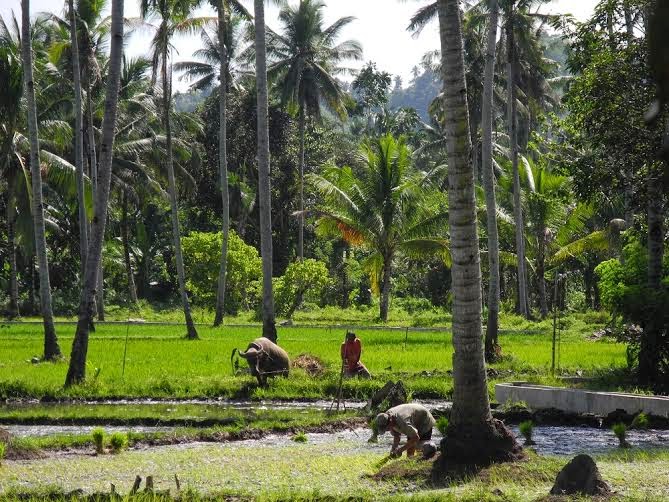
CAGAYAN DE ORO CITY (Mindanao Examiner / July 14, 2014) – While there has been a perceptible rise in the prices of rice from last year, there is still a sufficient buffer stock for all types to cancel out any possible profiteering, hoarding or cartelization in Northern Mindanao region.
This was affirmed by Roxana H. Hojas, regional technical director for operations of the Department of Agriculture–Regional Field Office 10, during a recent NEDA Media Forum.
According to figures gathered by the DA-10’s Agribusiness and Marketing Assistance Division, the average price of regular milled rice rose 20.5% for the first six months of 2014 to P37.81 per kilo compared to only P 31.38 for the same period last year.
The average price for premium rice increased 19.83% over the same period from P40.03/kg. to P47.97/kg. Well-milled rice also rose 17.47% from P36.64/kg. to P43.04/kg. over the same period. However, for January to June 2014, the increase recorded was only 2.17% from P37.19 (January) to P38 (June) per kg. for regular milled rice.
“We do monitoring of rice prices twice a week throughout the region,” Hojas said. “So we don’t really have a big increase in prices for 2014 because we have enough supply. If indeed there is increase in price even with enough supply, somehow, somewhere, some people may be manipulating.”
Speaking in the same forum, Information Officer Celeste Gaabucayan, of the National Food Authority-Region 10, said the rise in prices could also be attributed to the milling and other costs traders incurred and inputted into their retail prices.
“When they buy palay at P22 per kilo, traders incur expenses such as milling and labor to convert it into edible rice,” she explained. “In order to break even, they have to price their milled rice at P44/kg. and add two pesos profit margin and that’s how you have P46/kg. retail price for premium rice.”
“Similarly, when NFA buys palay at P17/kg. it has to price at P34/kg. to break even. So when NFA sells it at P32/kg. it is subsidized. However, since June 30, NFA outlets were directed to start retailing regular milled rice to marginalized poor at P27/kg. which is also available to better off buyers who want to buy it,” she said.
Gaabucayan said NFA-10 has increased the allocation for NFA outlets in the city up to 100 bags a day to address the situation. The agency has two outlets each in Agora and Puerto, and one each in Cogon and Carmen markets. In addition, it has rolling stores roving the villages selling NFA rice at P27/kg. for targeted beneficiaries in partnership with Department of Social Welfare and Development.
The rise in retail prices followed the rise in the average farm gate price of palay which rose to P18.27/kg. for the first quarter of 2014, up from P15.06 over the same period last year. Figures from the Philippine Statistics Authority-Bureau of Agricultural Statistics presented by the National Economic and Development Authority during the forum showed palay production for the first quarter increasing 22.79% from 143,179 tons to 175,809 tons .
As a result, net rice production available for consumption against the clean rice requirement also increased the region’s rice sufficiency level for the 1st quarter to 76.89% compared to only 64.93% over the same period last year, using the same per capita consumption figure of 115.7 kgs. versus the region’s 2014 estimated population of 4,508,166.
The region’s total rice stocks of 2,256,383 bags as of March 2014 as monitored by NFA-X was 91.3% higher than the total monitored over the same period last year, and was estimated to last 84 days based on the region’s daily rice consumption of around 26,820 bags. Prices were apparently also stabilized by the increase in the inflow of rice from outside the region compared to outflows for the 1st quarter of the year.
Rice inflows/outflows monitored by the Agribusiness and Marketing Assistance Division showed rice inflows increasing to 5,107.5 tons compared to only 3,487.95 tons over the same period last year, for a 1,619.55 tons increase or 46.4%. Some 96% of rice imports to the region came from Manila and Cebu in 2013, while 92.3% were accounted for by Iloilo this year.
On the other hand, rice outflows dropped from 4,326.40 tons in 2013 to only 1,279 tons this year, a steep 70.4% decrease. Some 2,800 tons of the rice outflows (64.7%) in 2013 were shipped to Tacloban for victims of Typhoon Yolanda, while the bulk (94.75%) in the first quarter of 2014 was shipped to Cebu. (Mike Baños)
